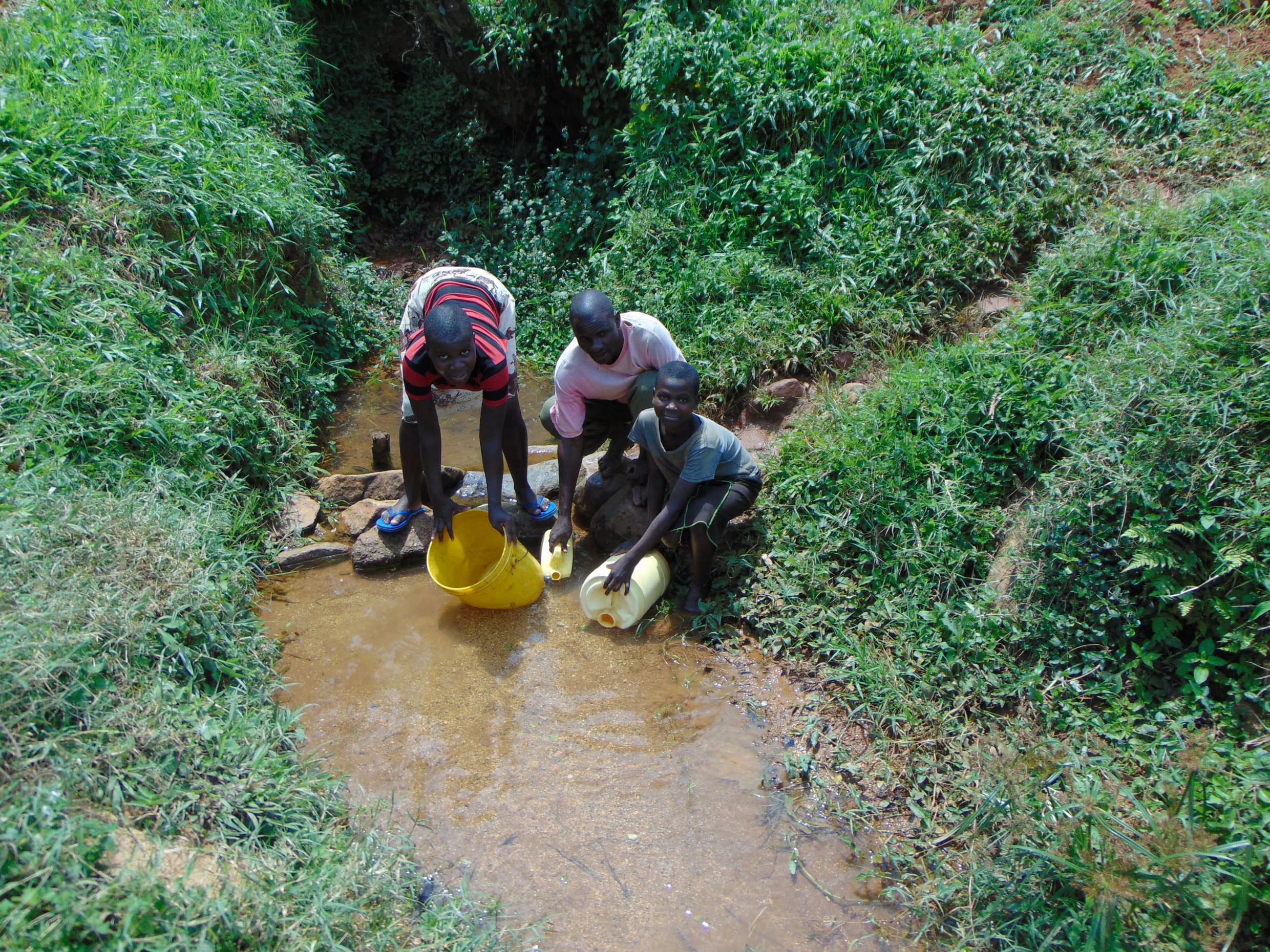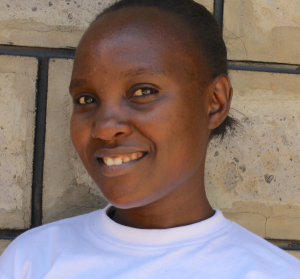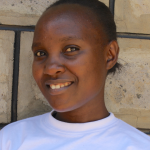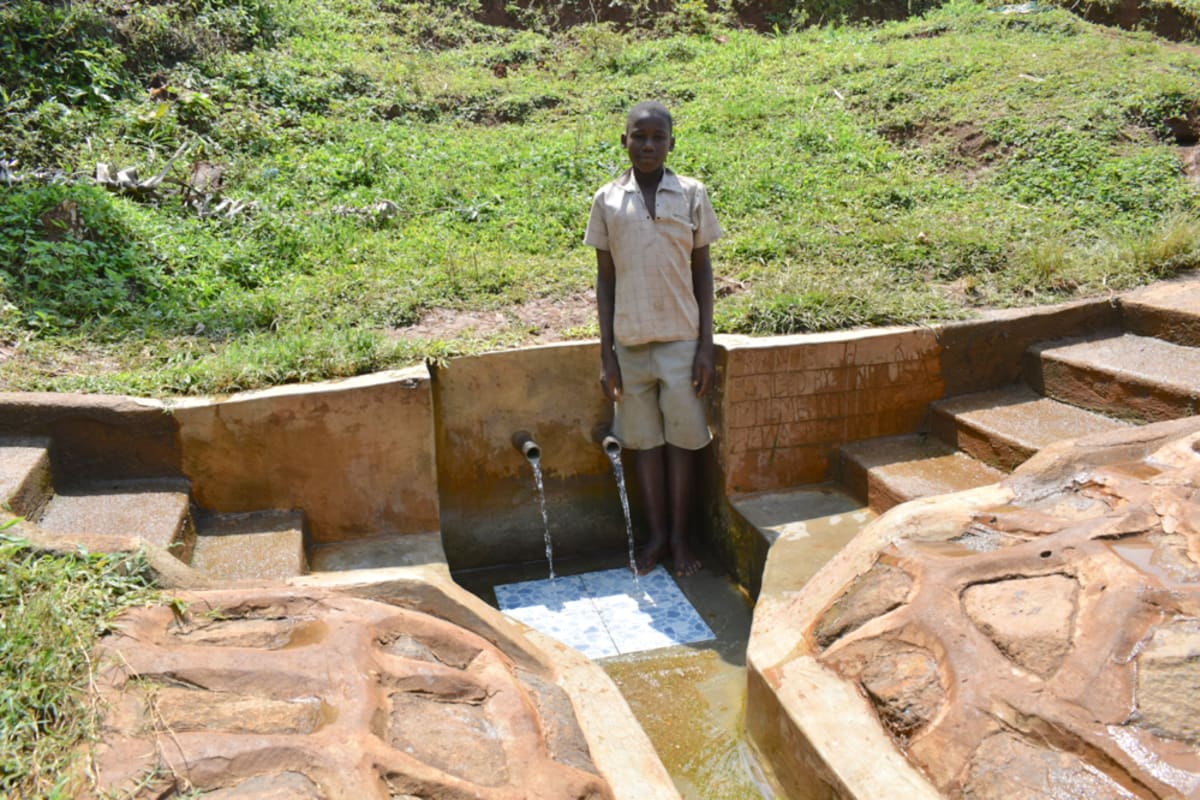When we left town to visit Francis Were Spring in Munenga, it was already a hot morning. It had not rained for a few days, hence the sun was hot and the roads were dusty. When we arrived, we saw how Munenga is a rural area that is highly vegetated. The area has a lot of trees and the farms are full of crops. The community is very quiet because it is sparsely populated since people own very huge pieces of land. The houses are made of mud walls and the roofs are made of either iron sheets or are grass-thatched.
We first learned about Francis Were Spring when we were conducting a community hygiene and sanitation training at Thomas Spring. There, we were approached by a young man who informed us about a high yielding spring that needed protection. After the training, we carried him on our motorcycle and he directed us to Francis Were Spring. We have been working with the Munenga community ever since.
Most families in Munenga are nuclear. Many men in the community are considered the breadwinners for their families, and as such most of them have moved to the city to look for greener pastures to provide a better livelihood for their families. The women are left at home to manage their households and families on their own. This includes fetching water for all drinking, cooking, and cleaning needs, looking after the children, and tending to their farms.
Most people from this community depend on mixed farming for a living. They plant a variety of crops including maize, beans, groundnuts, vegetables, cassava, sweet potatoes, and bananas. Some families raise cattle and most of them keep poultry for subsistence use. It is rare to find any land that has been left fallow.
Most of the community members from this region begin their day with house chores at around 6:00 am. The women are on the front line of ensuring all work is done. After finishing the house chores, women go to fetch water at the spring before the sun becomes too hot. They later go to the farms and come back at midday to prepare lunch for their families. During the present harvesting season, the women are tasked with manually shelling the maize, threshing beans, and airing each to dry. In the evening, the women look for firewood and prepare dinner. The day ends at 8:00 pm when the family retires to bed to save on kerosene, which is used to light lamps.
Water from Francis Were Spring is currently not safe for consumption because the spring box, the place right behind the spring's main output, is open and therefore exposed to all kinds of contamination. This includes risks from dirty runoff, animal waste, and human contaminants. Contamination worsens during the rainy season when stormwater runoff heightens these inputs. We noticed there is also green algae growing in the water, which in addition to harboring bacteria and microorganisms, makes the water have a bad smell. Despite all this, the spring currently serves 386 people because it is high yielding and permanent.

We observed that the women thoroughly clean the containers used for fetching drinking water using soap and rags. They do not bother to clean the rest of the containers used for fetching water for other household chores. This showed us how committed these community members are to improving their sanitation and hygiene situation however they can, and that they are eager to learn more.
At the spring, people dip their buckets directly into the water and wait for them to fill up from the water that collects in a deep pool. People here mostly complain of typhoid and stomachache after drinking this water, with cases becoming rampant during the rainy season. Most of the women also suffer from exhaustion because they live far from the water source, which weakens their immune system and leaves them susceptible to these waterborne and water-related illnesses whether they make the trip to this spring, or decide against it.
"When my wife is tired, she ends up going to a nearby, low yielding, unprotected spring which drains slowly [instead of Francis Were Spring], thus making the water have a bad taste and breed bacteria," said farmer Mr. Gideon Mutiso.
"On such occasions, the whole family falls sick and we end up quarreling. Now she sources drinking water from the gravity spring (Francis Were) and goes to the nearby spring to source water for other chores."
Even with this hierarchy in place for clean water, Francis Were Spring is far from clean.
"Many people in this community have a bad habit of washing clothes and bathing in the river. This leads to [the] spread of diseases from upstream to downstream," said 76-year-old farmer Mr. Francis Mwani. "We are eagerly waiting for you to enlighten the community on the dangers of such ignorant practices."
Munenga village is full of vibrant and active community members. Just a week after we vetted this spring, we went back and found that they had already mobilized sand for spring protection. They made a promise that they would be ready within weeks because they have suffered a lot and they would not take the chance of going another month without clean water. While the community has embraced farming to reduce hunger and poverty, their poor hygiene and sanitation situation still poses a big threat to their well being.
What we can do:
Spring Protection
Protecting the spring will help provide access to cleaner and safer water. Construction will keep surface runoff and other contaminants out of the water. The village elders in Munenga will help to sensitize community members on the importance of participating in the spring protection by providing the locally available materials and attending the hygiene and sanitation training. The chief will also help in solving land disputes and restrictions to water access whenever they occur. With the community’s high involvement in the process, there should be a good sense of responsibility and ownership for the new clean water source.
Fetching water is a task predominantly carried out by women and young girls. Protecting the spring and offering training and support will, therefore, help empower the female members of the community by freeing up more of their time and energy to engage and invest in income-generating activities.
Training
Community members will attend hygiene and sanitation training for at least 2 days. This training will ensure participants have the knowledge they need about healthy practices and their importance. The facilitator plans to use Participatory Hygiene and Sanitation Transformation (PHAST), Community-Led Total Sanitation (CLTS), Asset-Based Community Development (ABCD), group discussions, handouts, and demonstrations at the spring. One of the most important topics we plan to cover is the handling, storage, and treatment of water. Having a clean water source will be extremely helpful, but it is useless if water gets contaminated by the time it is consumed. We will also emphasize the importance of handwashing.
Training will result in the formation of a committee that will oversee the operations and maintenance of the spring. They will enforce proper behavior around the spring and delegate tasks that will help preserve the site, such as building a fence and digging proper drainage channels. The fence will keep out destructive animals, and the drainage will keep the area’s mosquito population at a minimum.
Sanitation Platforms
Most latrines in Munenga are made of mud floors which are rarely cleaned. We observed one log floor latrine which did not have any walls or roof, and flies were all over the hole.
On the final day of training, participants will select 5 families that should benefit from new concrete latrine floors. Training will inform the community and selected families on what they need to contribute to make this project a success. They must mobilize locally available materials, including bricks, clean sand, and gravel. The 5 families chosen for sanitation platforms must prepare by sinking a pit for the sanitation platforms to be placed over. All community members must work together to make sure that accommodations and food are always provided for the work teams.

 Protected Spring
Protected Spring
 Rehabilitation Project
Rehabilitation Project



































